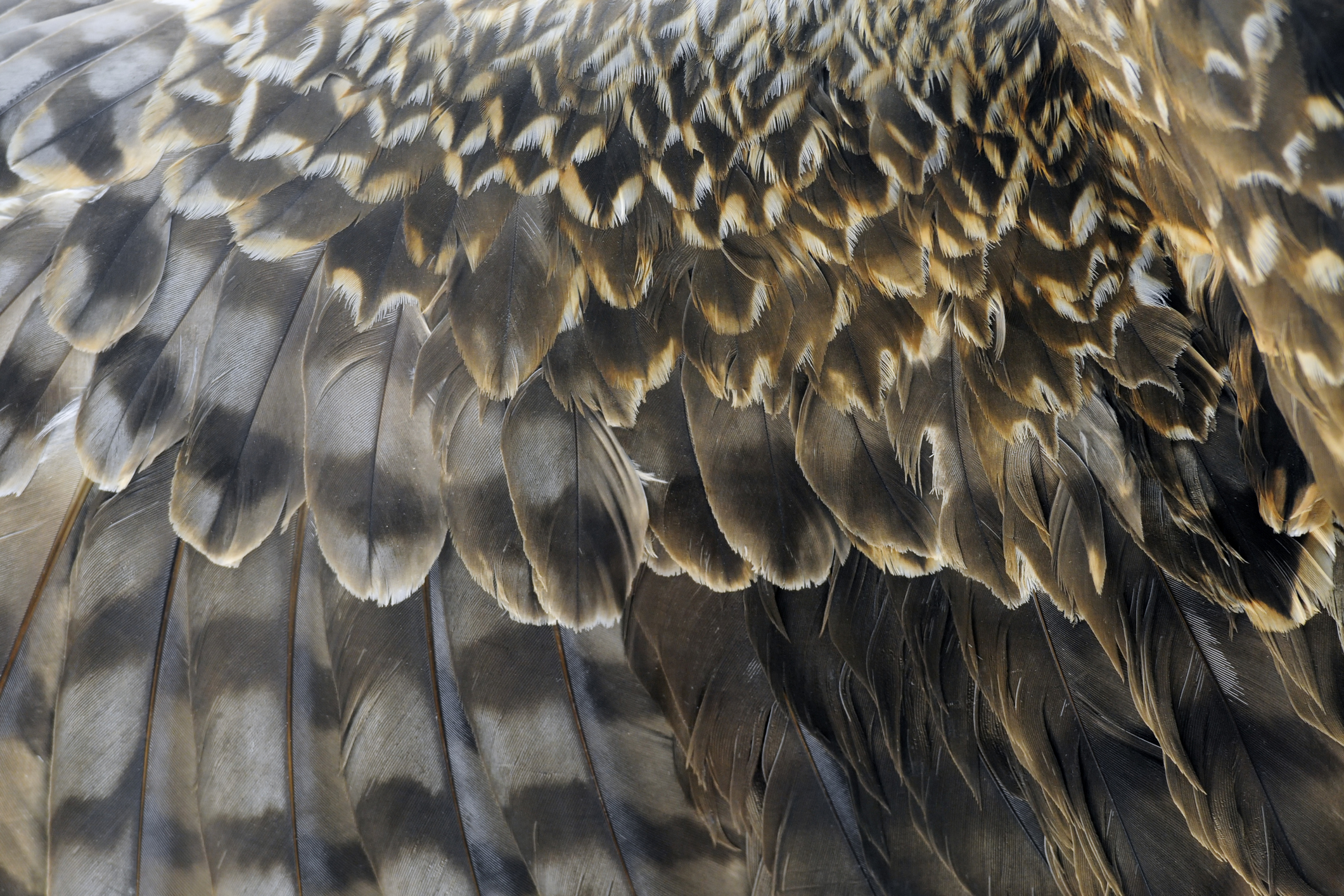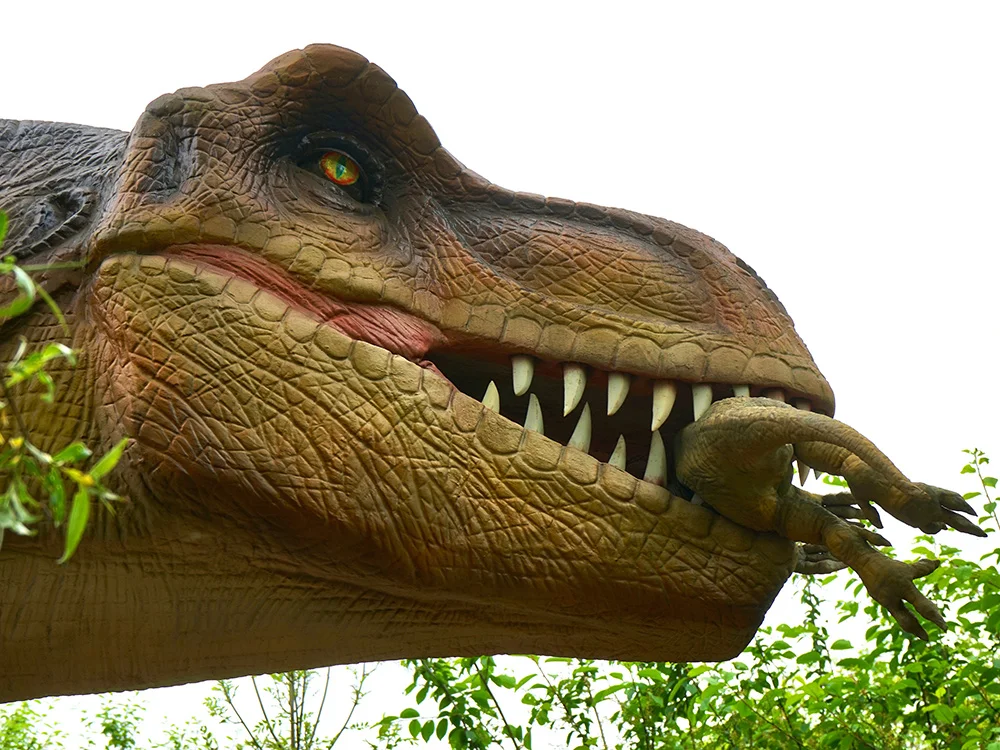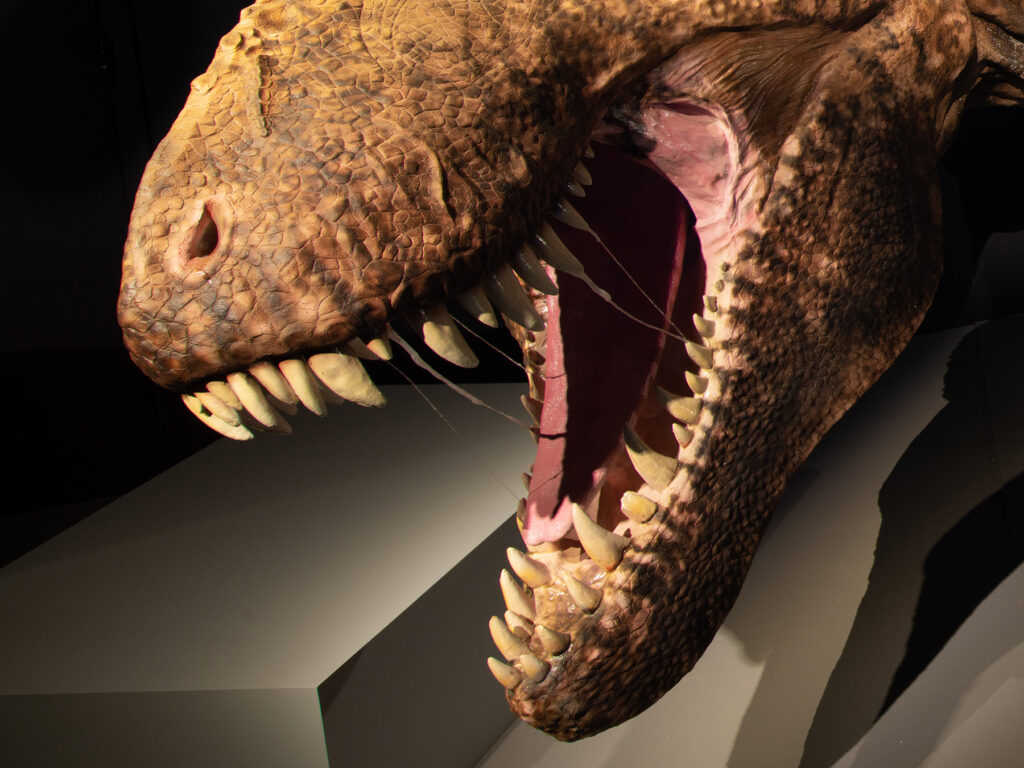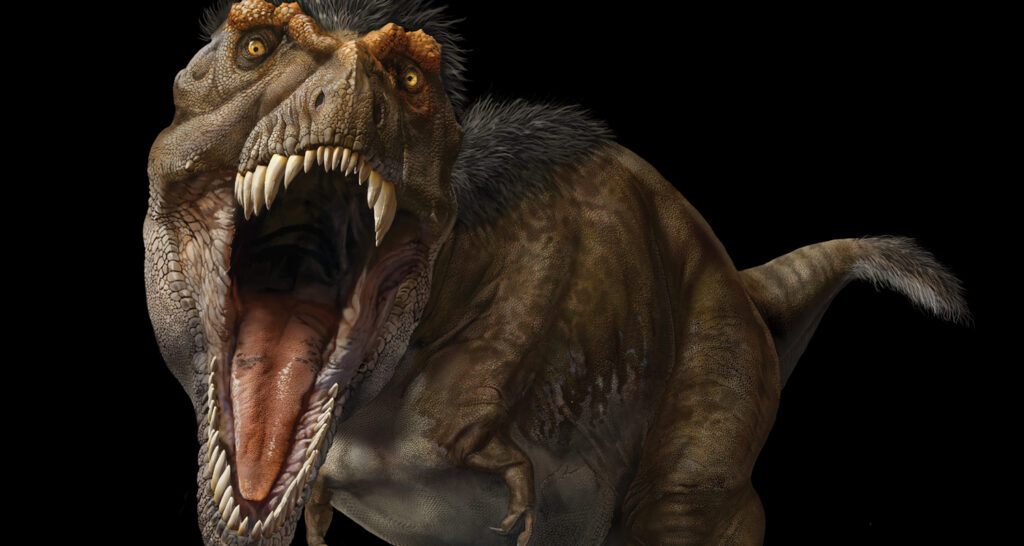For hundreds of millions of years, dinosaurs ruled the world. On Pangea, a supercontinent that included all of Earth’s continents, they started out as small animals (as small as cats!). These dinosaurs evolved from a group of reptiles called dinosauromorphs and lived alongside early relatives of crocodiles who were at the top of the food chain during this time—the Triassic Period.
Towards the end of the Triassic Period, Pangea began to break apart. For years super volcanoes were erupting and sea levels were rising, as were global temperatures and carbon dioxide emissions. These disruptions were too much for the early crocodiles to bear and many of their species went extinct, leaving the dinosaurs in charge.
And their reign continued for millennia all over the planet.
Throughout the Jurassic and Cretaceous Periods, they grew and evolved. Some dinosaurs had feathers and some had horns. Some were armored and some were ornately coloured. Some ate plants and some feasted on animals, including other dinosaurs.
Some dinosaurs grew to be gigantic and some remained small—“some were even small enough that they could fit in the palm of our hands!” So says Dr. Philip Currie, a paleontologist who helped found the Royal Tyrrell Museum of Palaeontology (RTMP), a museum in Alberta that houses one of the greatest fossil collections in the world.
About 66 million years ago, at the end of the Cretaceous period, there was another mass extinction event. A six-mile-wide, mountain-sized asteroid struck earth and ended the dinosaurs’ reign.
But this didn’t mark the end for all dinosaurs. As paleontologists have discovered, modern birds are, in fact, dinosaurs.
"I like to say, birds didn't just come from dinosaurs, they are dinosaurs,” remarks Dr. Donald Henderson, paleontologist and curator of dinosaurs at RTMP.
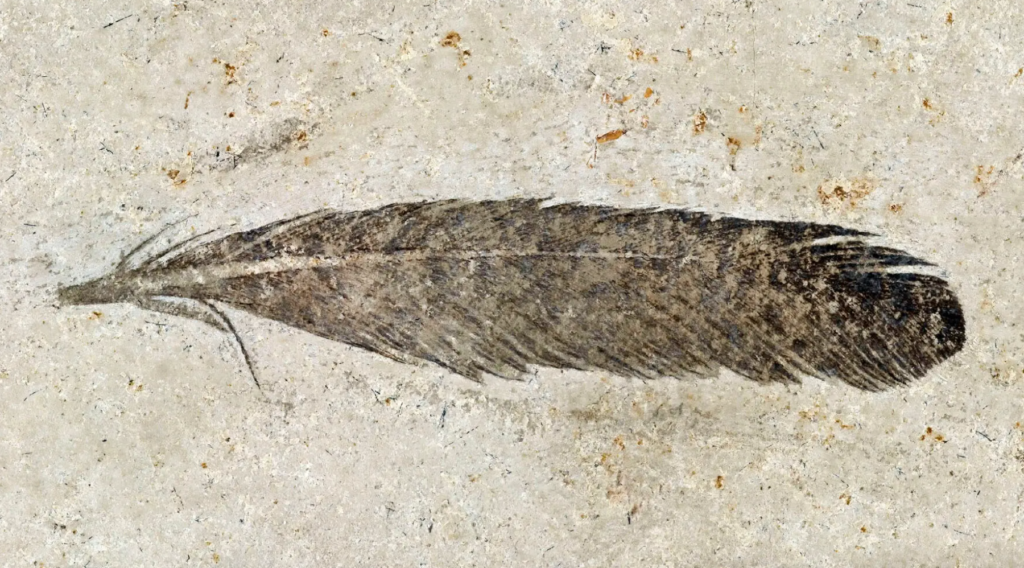
Ruffling Feathers
In 1861, the very first fossil feather was found in a limestone quarry in Solnhofen, Germany. This feather belonged to Archaeopteryx, the first bird-like dinosaur.
During this time, some paleontologists who examined animal skeletons had also begun to notice similarities between birds and dinosaurs.
Dr. Currie explains that despite these discoveries, there was much skepticism. It wasn’t until the late 1900s when paleontologists found a skeleton with a wishbone (a bone usually found in birds) in Mongolia and identified it as a Velociraptor that the theory of birds evolving from dinosaurs really started to garner support.
Since then more discoveries have been made, including hundreds of feathered dinosaurs unearthed in China, Mongolia, Argentina, and Alberta. Now, it is a fact that birds are descendants of small carnivorous dinosaurs called theropods.
Some well-known theropods are Velociraptor and Tyrannosaurus rex but paleontologists say birds descended from the smaller theropods, not massive ones like T. rex.
Flocking Together
Just as birds of today come in a diversity of sizes, shapes, and colours, so did dinosaurs. And as Dr. Henderson explains it, “all birds descended from dinosaurs but not all dinosaurs evolved into birds.”
Dinosaurs (both non-avian and avian dinosaurs) and birds coexisted for millions of years before non-avian dinosaurs became extinct about 66 million years ago.
Avian dinosaurs, however, had already begun evolving a variety of adaptations—including bipedal mobility and feathers—that allowed them to exploit (and survive in) other habitats that were not accessible to non-avian dinosaurs.
Famed dinosaurs we read about like T. rex, Triceratops, and Brontosaurus, left no living descendants. Dr. Jordan Mallon, paleontologist and research scientist at Canadian Museum of Nature, says that these dinosaurs were at the end of their evolutionary line; they were “evolutionary dead ends.”
As Dr. Currie explains, “For dinosaurs like T. rex, the evolutionary pressure was to become bigger not smaller. These bigger dinosaurs were already going in a certain direction. It's very hard to reverse that direction once it's been established in the lineage.”
But even in the dinosaurs that survived, feathers did not first evolve for flight. Dr. Mallon explains that early feathers were functional for dinosaurs in other ways before becoming more complex like quills and then evolving into wings.
Although they were flightless, their feathers kept them warm, and were likely useful for display, to intimidate rivals, and to court mates. Feathers could signal to potential partners, “Hey, I’m a virile young dinosaur!” or “Hey, I’m available to copulate!” says Dr. Mallon.
Over time, feathers gave them an “aerodynamic edge” adds Dr. Currie, possibly allowing them to glide, take small leaps, and climb up trees.
Sauring High
Feathers and wishbones aren’t the only features that tell us birds evolved from dinosaurs. Dr. Henderson marvels at the deltopectoral crest—another shared feature.
“The next time you're having turkey dinner, look at the upper arm bone and you will see this distinctive flange called the deltopectoral crest,” he says. “No other living animals have that and the only extinct group of animals that had it were dinosaurs.”
Dr. Mallon notes other features, such as hollow bones, short, stubby tails, loss of teeth, oviparity (reproducing by laying eggs) and a unique respiratory system.
Like birds of today which have air sacs that extend out of their lungs and help them take in oxygen during both inhalation and exhalation, paleontologists have found evidence that dinosaurs also had air sacs.
To this day, paleontologists continue to uncover more truths that tell a rich story about the lives dinosaurs lived and reveal to us how this story continues in the lives of birds. As Dr. Currie puts it: “Dinosaurs are still alive today.”
Wanna be enraptored by the rich story of dinosaurs?
Book a visit to our current feature exhibition, T. rex: The Ultimate Predator presented by RBC and White Spot Restaurants. It'll take you back in time to encounter the prehistoric wonders of the late Cretaceous period and come face-to-face with a 66-million-year-old marvel!
